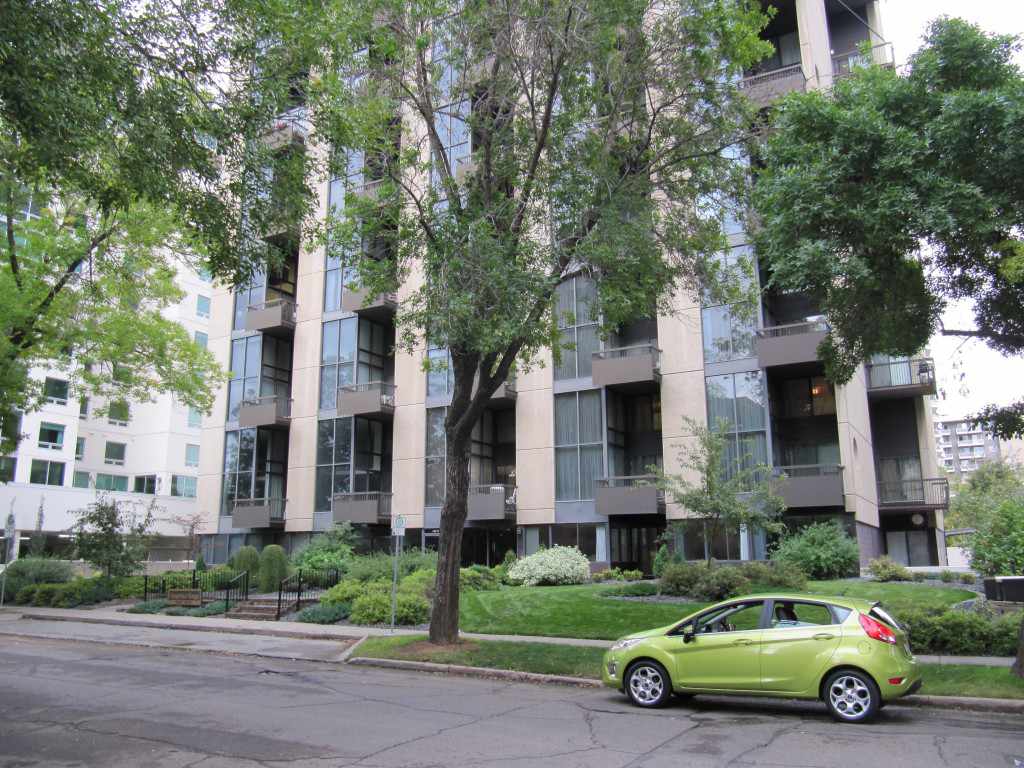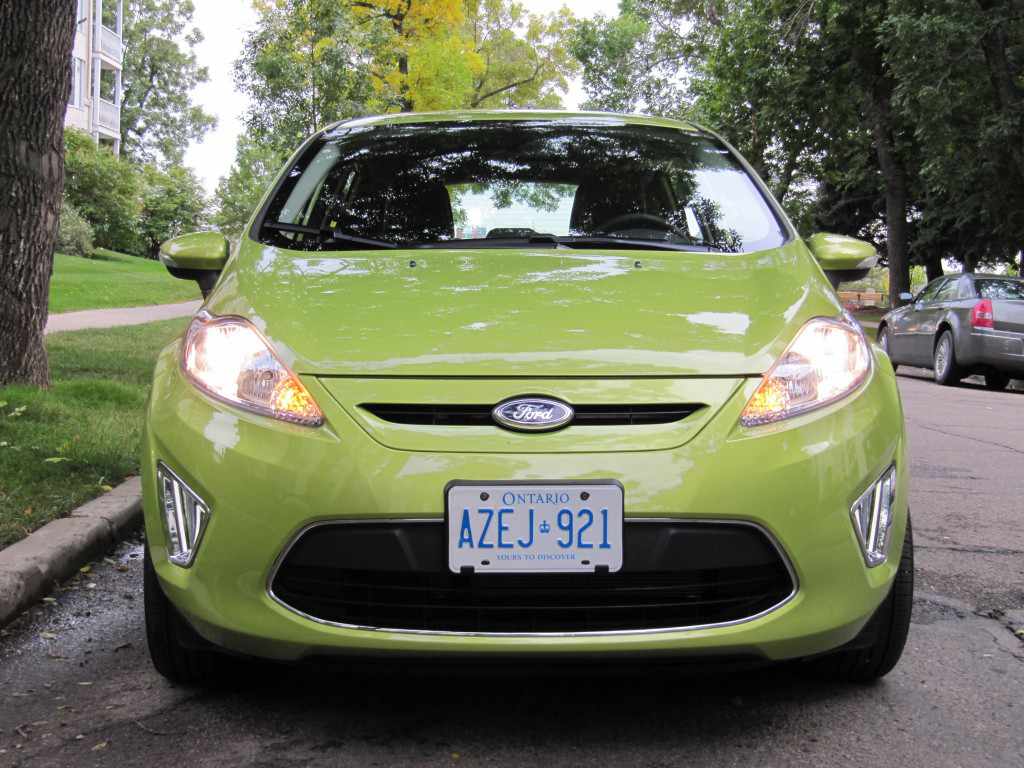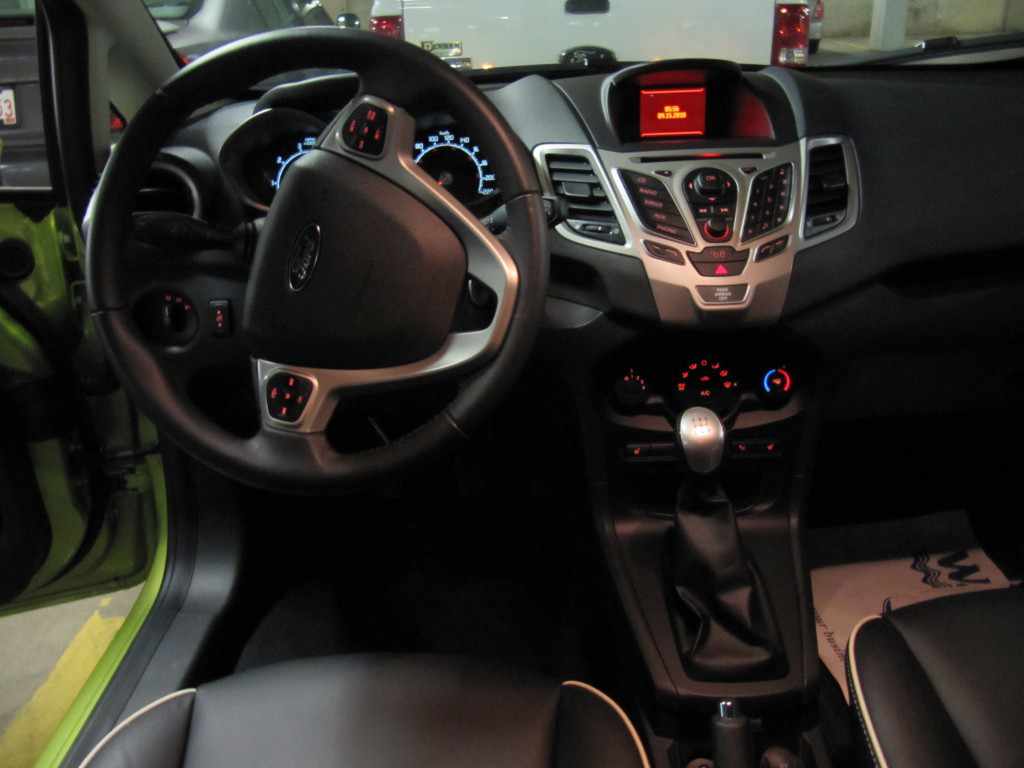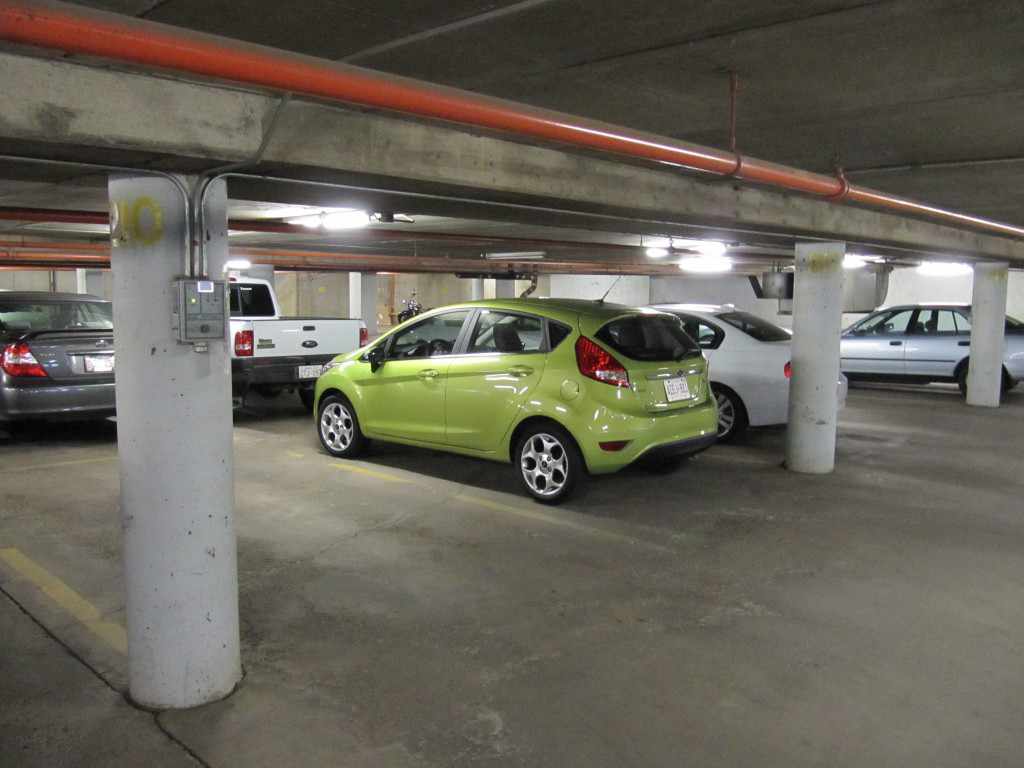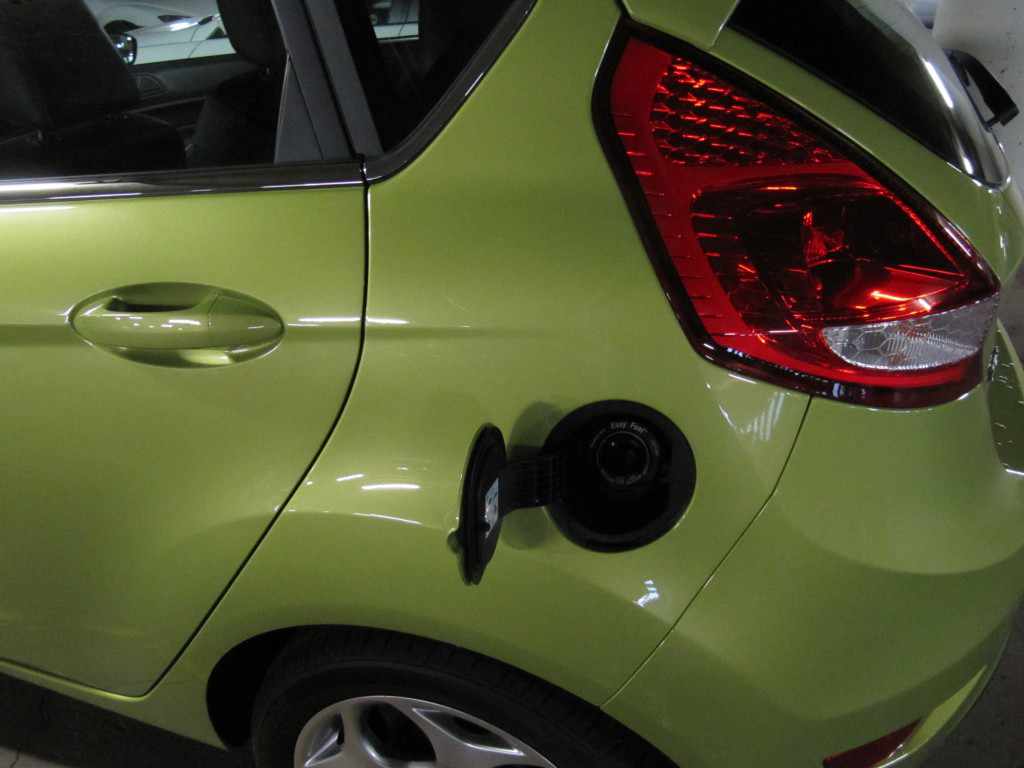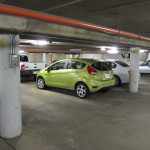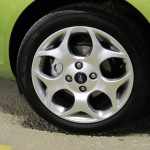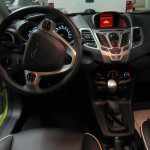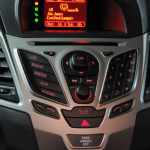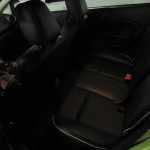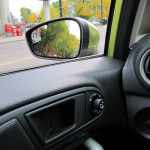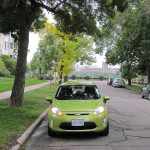We talked briefly the other week about marketers and their promises of panacea, and we came to the conclusion that the new Mustang is an excellent car for life on the Prairies. But what about life in the city? Although Canadian cities are understandably sprawling due to our nation’s expansive and largely horizontal geography, there are pockets of density that require a different kind of car. The Mustang we drove recently, with its 412 horsepower, would surely be asphyxiated in the concrete jungle of an urban metropolis, so Ford has introduced the Fiesta. This is the car that was designed for the city, y’know, the kind where most of us actually live in day-to-day, and not the closed circuit race track we dream of when purchasing cars with sporting intentions. The Fiesta, then, is a car for the real world. Not that any of this is news to our European friends, where the Fiesta has been sold for decades. But gas prices have always been high there, making small cars perennially attractive; it was only the recent increase in the price of petroleum in North America that made it viable for Ford to bring the Mexican party to Canada.
Being a 20-something downtown-dweller and a despiser of suburban life, I almost certainly fall into the key demographic that small cars like the Fiesta aims to seduce. That being said, I’m also a member of the iPod generation and a person accustomed to the democratization of luxury, leaving the Fiesta with a tall order to fill in terms of feature content and bang-for-the-buck. A Chevy Aveo isn’t going to cut the mustard. The petite Fiesta counters my sense of entitlement with voice-activated SYNC, heated leather seats, a 5-speed manual, and a mould-breaking design that gives it a certain joie de vivre. But the true test of the Fiesta will be to see if it is any better than my current urbanite steed, a 2002 Mazda Protege5.
You can just make out the LED “parking lights” below the headlights. Very slick looking, especially at night.
I was tossed the keys to a mojito-green 5-door SES model, which is really the one you want. With a list price of only $21,500 and current incentives driving down that meager list further still, the Fiesta is a value proposition that has even my notoriously frugal father interested. Still, the question lingers, would I have one over my Protege5?
Before we get to the nitty gritty of the facts and figures comparing the two cars, I need to mention just how impressive the new Fiesta feels from the driver’s seat. The interior is Volkswagen-solid with even better ergonomics, the ride is so smooth that I thought I was in a mid-level German sedan, and the noise isolation is frankly impressive. You really can tell that this car was designed to be good enough for more discerning European buyers, and that we’re merely the fortunate recipients of their refined tastes. Upscale touches abound, such as the triple-flashing turn signals and slick-looking LED “parking lights” on the lower front fascia. These little touches raise the Fiesta above its B-class competitors, above the C-class cars such as the Corolla and Civic, and firmly into D-class territory occupied by Fusions, Sonatas, Camries, and Accords. At the current time, there is nothing in the B-class that even comes close to the sense of quality that the Fiesta incurs on its occupants. I suspect that this car will hold the top spot until the 2012 Hyundai Accent is released – Honda, Toyota, and Chevy don’t have a hope.
The interior feels just as good as it looks.
So let’s get on with our informal comparison with the 9-year-old, 125,000km hatchback. Starting with the Fiesta, we note the lack of telescoping adjustment in the steering wheel (correction: the steering wheel does telescope, my feeble arms just couldn’t pull it out), although the steering wheel itself is perfectly fine, with a thick rim and convenient controls for audio, cruise, and SYNC. This is more than can be said of the Mazda, which also lacks telescopic steering. The accuracy of the steering in the Fiesta is also significantly better, with the Ford feeling more pointy, nimble, and ready for the narrow streets of downtown. Despite boasting nearly identical turning radii, the Mazda feels more cumbersome around town. This having been said, we can probably chalk up the Mazda’s sloppy steering to age, or should I say “experience”? As for the rest of the interior, there’s little point in comparing the rudimentary system in the Mazda to the complex, but still relatively easy to use, system in the Ford. The Fiesta has so many more interior features that an increase in clutter is as inevitable as the coming of winter.
In terms of rear leg room, the added size of the Protege5 is noticeable, as it is in the trunk space. The trunk in the Fiesta may be small, but it is more than adequate for a gym back and a backpack, which is about all that would normally go in there for a commuting urbanite (assuming they don’t take public transit, walk, or bike instead). Golf clubs won’t fit in the Fiesta without folding the seats down, but nor will they in my Protege5. The biggest storage space miscue in the littlest Ford is that the rear seats don’t fold down flat they way they do in my P5, or the more directly competing Honda Fit, for that matter.
The Fiesta is very much at home in condo building parkades downtown.
In terms of the driving experience, the Fiesta was hugely impressive. The whole body felt like it was one solid block, especially compared to the suddenly flimsy-feeling Protege5. While taking a corner over rough Edmonton roads, the Mazda’s steering column shuddered as the chassis flopped lifelessly and the tires begged for purchase. In comparison, the Fiesta was agile and reassuring. It really was night and day. This was somewhat surprising considering that the Protege5 carries 212 lbs. more than the Fiesta. Where did all the weight in my Mazda go? I have no clue, but I know that it wasn’t soundproofing, rustproofing, chassis reinforcement, or gadgets.
One thing that the Mazda does have in its favour is crisper acceleration off the line, thanks to its 130 hp 2.0L. Not that the Fiesta was inadequate for city driving. Honestly, more than 120 hp from its 1.6L never seemed to be a necessity. The Fiesta also benefits from drastically better fuel economy: 29 city/38mpg hwy vs. 25/30mpg for the Protege5 (that’s on the American system). I averaged 7.0L/100km during my week with the Fiesta, compared to the 9.0L/100km I usually see in the Mazda.
All in all, I struggled to even write this review. This new Fiesta is so complete and so accomplished that I feared I would sound like the marketers I frequently criticize. It’s just that good. In the end though, I realized that there is nothing wrong with a raving review, as long as it comes from the right source. If you see a glowing review of a car in your local newspaper, it carries about as much weight as a 2-month old kitten named Benny; but if you read a glowing review here, you can feel confident knowing that it was completely and utterly justified. Just look at how hard we were on Lexus’ IS250 AWD, which is by most accounts a perfectly decent automobile. While we’ve since moved away from the type of scoring system used to rate the IS250, if we still employed it today, the Fiesta would be breathing the rarefied air of 9/10. At least. Even the Lexus IS-F we tested only earned a 7/10! Suffice to say that this is the most well-rounded car we’ve ever driven, and one that calls the city home. Let the Mexican party begin.
This review was made possible by Dean Heuman and Ford Canada. The vehicle was provided with a tank of gas and insurance for the purposes of this review.

